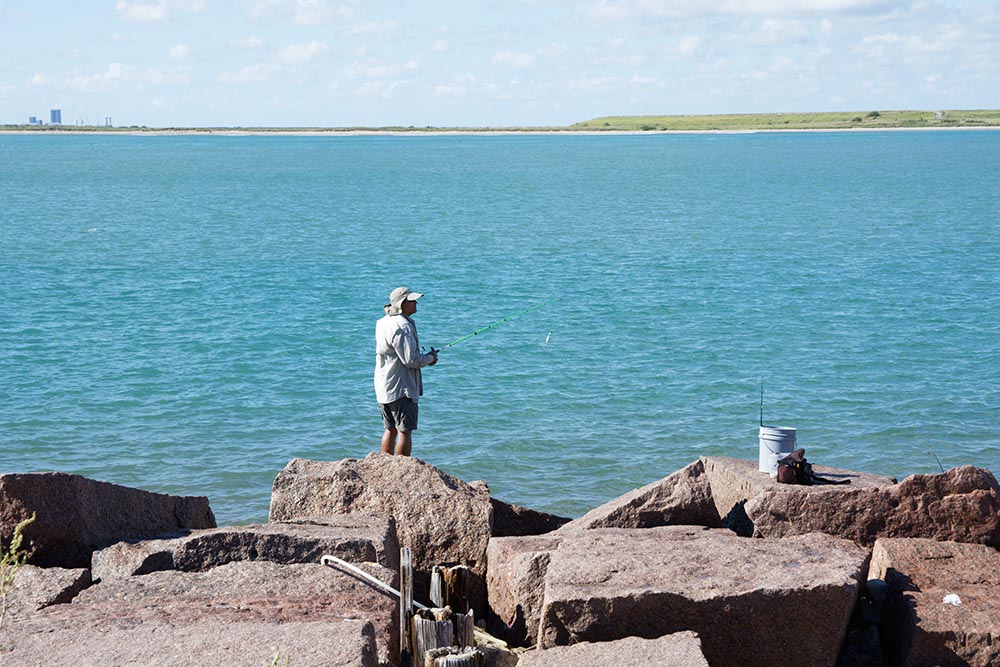Alarmed by 19 drowning deaths while fishing in and around Texas waters, the U.S. Coast Guard and Texas Parks and Wildlife Department have issued a warning and a list of safety practices.
Nine of the drownings occurred among people who were wade fishing.
“With a few popular fishing months left in the year, now is the time to raise public awareness of safety hazards facing local anglers, especially those fishing on foot,” said Assistant Cmdr. Cody Jones, TPWD boating law administrator. “River currents, rip tides and the ever-shifting bottoms in tidally influenced areas lead to significant risks for wade fisherman in these coastal environments, making it imperative that participants take steps to mitigate such risks.”
Coast Guard Sector Houston-Galveston personnel have responded to five incidents involving wade fishing in 2021, including a case on Oct. 3 when two men went missing while wade fishing near the Galveston-Port Bolivar Ferry terminal.
Coast Guard boat and helicopter crews, along with TPWD personnel, deputies from the Galveston County Sheriff’s Office and Crystal Beach Fire Department, searched for the two anglers. Both were found dead.
“Fishing along the Texas coast, rivers and bays is an enjoyable pastime for many, including me and my family, but it is critical to understand the risks involved and follow recommended safety tips,” said Coast Guard Capt. Jason Smith, commander, Sector Houston-Galveston. “While the Coast Guard, Texas Parks and Wildlife Department and our many other partners on the water are always ready, we are not always everywhere. Be safe and keep your fish on the line, not your life.”
Stay safe out there
Always wear life jacket: Even if wade fishing, fishing from a pier, or fishing from shore, you can unexpectedly fall in the water or encounter unseen hazards.
Know area: Many hazards may be present in shallow water and along shorelines, such as sneaker waves, strong currents and sudden drop-offs. Wade fishermen should be especially cautious around areas where the water funnels, such as points and cuts, which can produce stronger currents.
Be cautious with snags: Don’t enter waters to retrieve tangled fishing tackle when you don’t know what the bottom is like.
Hypothermia threat: Even in Texas, the water can get cold enough to negatively affect you and your body if you’re exposed too long without protective clothing. For example, 30 minutes in 60-degree water can limit your dexterity, while two hours can render you exhausted or unconscious.
File float plan: Before heading out on a fishing trip, notify a friend or relative where you are going, when you plan to return and your method of communication.
Carry personal locator beacon: A PLB is a small device you can attach to your life jacket while fishing that will transmit a distress signal if you are stranded or need help.
Source: U.S. Coast Guard, TPWD




